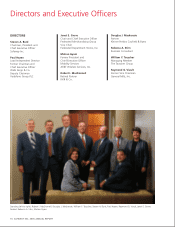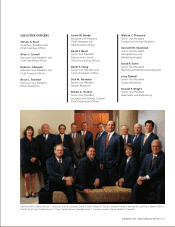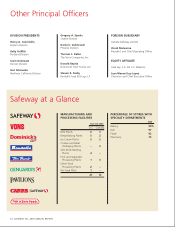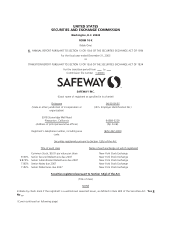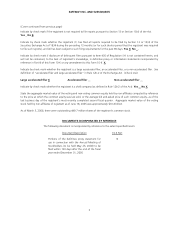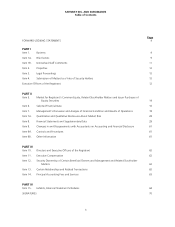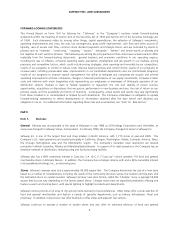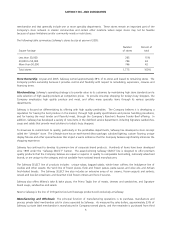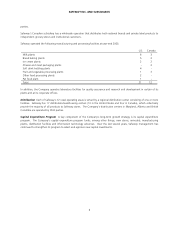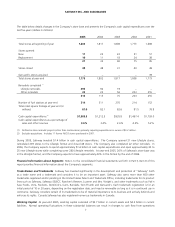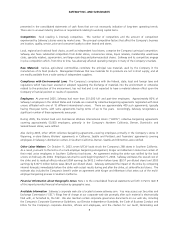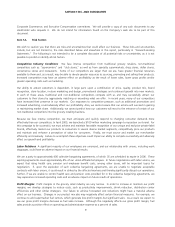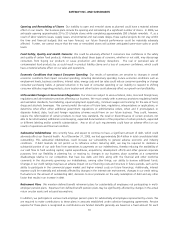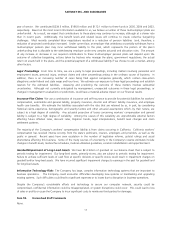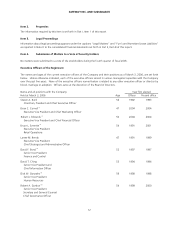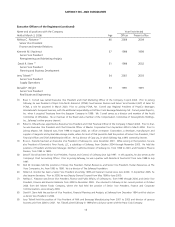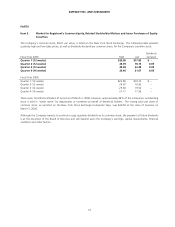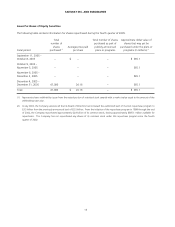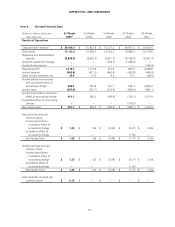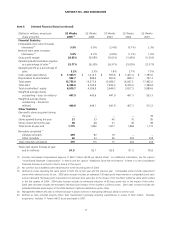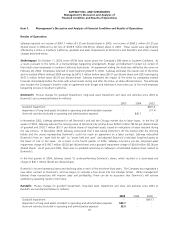Safeway 2005 Annual Report Download - page 28
Download and view the complete annual report
Please find page 28 of the 2005 Safeway annual report below. You can navigate through the pages in the report by either clicking on the pages listed below, or by using the keyword search tool below to find specific information within the annual report.SAFEWAY INC. AND SUBSIDIARIES
8
presented in the consolidated statements of cash flows that are not necessarily indicative of long-term operating trends.
There are no unusual industry practices or requirements relating to working capital items.
Competition Food retailing is intensely competitive. The number of competitors and the amount of competition
experienced by Safeway's stores varies by market area. The principal competitive factors that affect the Company's business
are location, quality, service, price and consumer loyalty to other brands and stores.
Local, regional and national food chains, as well as independent food stores, comprise the Company’s principal competition.
Safeway also faces substantial competition from dollar stores, convenience stores, liquor retailers, membership warehouse
clubs, specialty retailers, supercenters, and large-scale drug and pharmaceutical chains. Safeway and its competitors engage
in price competition which, from time to time, has adversely affected operating margins in many of the Company’s markets.
Raw Materials Various agricultural commodities constitute the principal raw materials used by the Company in the
manufacture of its food products. Management believes that raw materials for its products are not in short supply, and all
are readily available from a wide variety of independent suppliers.
Compliance with Environmental Laws The Company's compliance with the federal, state, local and foreign laws and
regulations which have been enacted or adopted regulating the discharge of materials into the environment or otherwise
related to the protection of the environment, has not had and is not expected to have a material adverse effect upon the
Company’s financial position or results of operations.
Employees At year-end 2005, Safeway had more than 201,000 full- and part-time employees. Approximately 80% of
Safeway's employees in the United States and Canada are covered by collective bargaining agreements negotiated with local
unions affiliated with one of 10 different international unions. There are approximately 400 such agreements, typically
having three-year terms, with some agreements having terms of up to five years. Accordingly, Safeway renegotiates a
significant number of these agreements every year.
During 2005, the United Food and Commercial Workers International Union (“UFCW”) collective bargaining agreements
covering approximately 50,000 employees, primarily in the Company’s Northern California, Denver, Dominick’s and
Saskatchewan stores, were ratified.
Also during 2005, other UFCW collective bargaining agreements−covering employees primarily in the Company's stores in
Wyoming; in-store Bakery Workers’ agreements in California, Seattle and Portland; and Teamsters’ agreements covering
employees in Safeway's distribution centers in Southern California, Denver, Seattle and Edmonton−were ratified.
Other Labor Matters On October 11, 2003, seven UFCW locals struck the Company’s 289 stores in Southern California.
As a result, pursuant to the terms of a multi-employer bargaining arrangement, Kroger and Albertson’s locked out certain of
their retail union employees in Southern California food stores. An agreement ending the strike was ratified by the local
unions on February 28, 2004. Employees returned to work beginning March 5, 2004. Safeway estimates the overall cost of
the strike and its residual effects reduced 2004 earnings by $412.2 million before taxes ($0.57 per diluted share) and 2003
earnings by $167.5 million before taxes ($0.23 per diluted share). Safeway estimated the impact of the strike by comparing
internal forecasts immediately before the strike with actual results during and after the strike, at strike-affected stores. The
estimate also includes the Company’s benefit under an agreement with Kroger and Albertson’s that arises out of the multi-
employer bargaining process in Southern California.
Financial Information about Geographic Areas Note L to the consolidated financial statements set forth in Part II, Item 8
of this report provides financial information by geographic area.
Available Information Safeway’s corporate web site is located at www.safeway.com. You may access our Securities and
Exchange Commission (“SEC”) filings free of charge at our corporate web site promptly after such material is electronically
filed with, or furnished to, the SEC. We also maintain certain corporate governance documents on our web site, including
the Company’s Corporate Governance Guidelines, our Director Independence Standards, the Code of Business Conduct and
Ethics for the Company’s corporate directors, officers and employees, and the charters for our Audit, Nominating and


